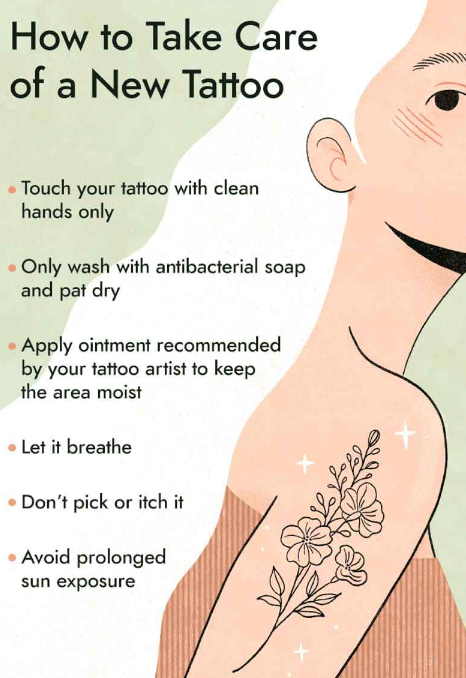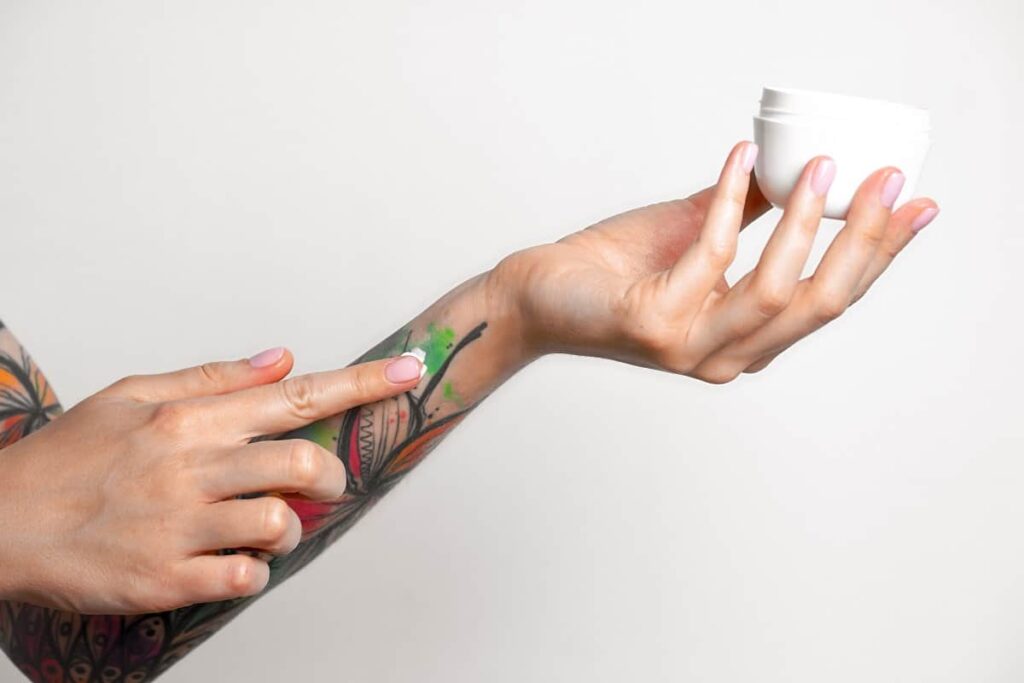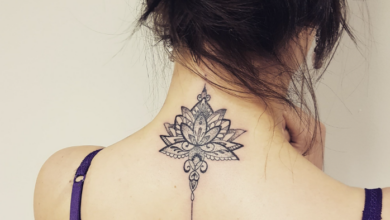
Imagine a blank canvas transformed into a vibrant work of art, etched forever on your skin. Whether it’s a symbol of personal meaning or a beautiful design, tattoos hold a special place in our lives. But have you ever wondered about the journey a tattoo undertakes from its fresh and vibrant state to eventually fading over time?
In this article, we will take a closer look at the fascinating life cycle of a tattoo, exploring the various stages it goes through and the factors that influence its longevity. So sit back, relax, and embark on a captivating journey into the world of tattoos.

Preparing for the Tattoo
Choosing the Design
When it comes to getting a tattoo, choosing the design is a crucial first step. Take your time to think about what you want your tattoo to represent. It could be something that holds personal significance, a piece of artwork that speaks to you, or a symbol that holds cultural or spiritual meaning. Consider the size and placement of the tattoo as well, as this can affect the overall design.
Selecting the Tattoo Artist
Finding the right tattoo artist is essential to ensure a successful and satisfactory outcome. Research local tattoo studios and artists to find someone whose style aligns with the design you have in mind. Look through their portfolios, read reviews, and ask for recommendations from friends or acquaintances. Meeting with the artist beforehand will also give you the opportunity to discuss your design and gauge their professionalism and expertise.
Preparing the Skin
Before getting a tattoo, it is important to prepare your skin properly. Ensure that the area you plan to get tattooed is clean and free of any cuts, sunburns, or irritations. It is also recommended to moisturize the skin regularly leading up to the tattoo appointment to keep it hydrated and supple. Avoid excessive sun exposure, as it can damage the skin and make it more difficult for the tattoo to heal properly.
Getting the Tattoo
The Tattooing Process
Now that you have chosen the design and selected a tattoo artist, it is time for the tattooing process. During the appointment, the artist will clean the area, transfer the design onto your skin, and begin the tattooing process using a needle and ink. The length of the process will depend on the complexity and size of the tattoo, as well as your pain tolerance. Don’t be afraid to communicate with the artist if you need a break or if something feels uncomfortable.
Pain and Aftercare
Tattooing can be painful, but the level of discomfort varies depending on the individual and the placement of the tattoo. Some people describe it as a mild irritation, while others may find it more uncomfortable. Once the tattoo is complete, the artist will clean the area again and provide aftercare instructions. It is crucial to follow these instructions carefully to ensure proper healing, including cleaning the tattoo, applying ointment, and avoiding activities that may irritate the tattoo.

The Fresh Tattoo
Immediate Aftercare
Immediately after getting a tattoo, it is important to provide proper aftercare to promote healing and prevent infection. Keep the bandage on for the recommended time and then gently wash the tattoo with mild, fragrance-free soap and lukewarm water. Avoid scrubbing or scratching the tattoo, and pat it dry gently with a clean towel. Apply a thin layer of recommended ointment or moisturizer to keep the tattoo hydrated and protected.
Healing Process
The healing process of a tattoo can take several weeks. During this time, it is important to continue following the aftercare instructions provided by your tattoo artist. Keep the tattoo clean, avoid exposing it to excessive moisture or sunlight, and refrain from picking at any scabs or peeling skin. The tattoo may go through various stages, including scabbing, peeling, and itching. It is essential not to scratch or pick at the tattoo to prevent damage and ensure proper healing.
Tattoo Aging
As the tattoo heals, you may notice some changes in its appearance. Initially, the tattoo may appear vibrant and bold, but over time, it may start to fade slightly and lose some of its sharpness. This is a natural part of the tattoo aging process and can vary depending on factors such as skin type, ink quality, and the tattoo’s exposure to sunlight or harsh environments. While some fading is expected, proper care and maintenance can help slow down the aging process.

Maintaining the Tattoo
Protecting from Sun Exposure
One of the most significant factors contributing to tattoo fading is excessive sun exposure. UV rays can penetrate the skin and break down the tattoo ink, causing it to fade prematurely. To protect your tattoo from sun damage, always apply a broad-spectrum sunscreen with high SPF to the tattooed area, especially when spending time outdoors. Additionally, consider wearing protective clothing or seeking shade whenever possible to minimize direct sunlight exposure.
Proper Hydration and Moisturizing
Keeping your tattoo well-hydrated and moisturized is crucial for maintaining its longevity and vibrancy. Use a fragrance-free lotion or tattoo-specific aftercare product to keep the skin moisturized, especially when it feels dry or tight. Avoid using products that contain harsh chemicals or fragrances, as they can potentially irritate the tattoo and affect its healing process.
Touch-Ups and Maintenance
Over time, tattoos may require touch-ups to restore their color and vibrancy. This is especially true for areas that are constantly exposed to friction or sunlight. Consult with your tattoo artist to determine the best approach for touch-ups and maintenance. They will assess the tattoo’s condition, recommend any necessary adjustments, and provide guidance on scheduling touch-up appointments.

Fading of the Tattoo
Factors Contributing to Fading
Several factors can contribute to the fading of a tattoo. These include exposure to sunlight, frequent friction or rubbing, harsh chemicals in skincare products, and inadequate aftercare. Additionally, the quality of ink used and the depth at which it was inserted into the skin can also impact how well a tattoo holds up over time.
Sunlight as a Major Culprit
Sunlight is considered one of the primary culprits for tattoo fading. UV rays can break down the pigments of the tattoo, causing them to gradually lighten or lose their original color. To minimize sun damage, ensure that you protect your tattoo with sunscreen, clothing, or other physical barriers when spending time outdoors, especially during peak sun hours.
Lifestyle and Aging Effects
Your lifestyle and the natural aging process can also affect how your tattoo ages and fades. Factors such as weight fluctuations, hormonal changes, and skin elasticity can impact the appearance of a tattoo over time. Additionally, as the skin naturally ages, it becomes thinner and looser, which can also contribute to tattoo fading and distortion.
Refreshing or Covering Up
Tattoo Refreshing Techniques
If you notice that your tattoo has faded or lost its vibrancy, there are options available to refresh its appearance. Consult with your tattoo artist, as they can assess the condition of the tattoo and recommend appropriate techniques. Tattoo refreshing can involve adding new ink to revive colors or redefining outlines and details to enhance the tattoo’s overall appearance.
The Decision to Cover Up
In some cases, individuals may choose to cover up an existing tattoo rather than refreshing it. This decision can be influenced by personal preference, changes in lifestyle or beliefs, or dissatisfaction with the current tattoo. Tattoo artists can work with you to design a cover-up tattoo that incorporates the existing tattoo seamlessly or completely conceals it with a new design.
Tattoo Removal
If you no longer wish to have a tattoo, tattoo removal is an option to consider. There are various methods available, including laser removal, dermabrasion, and surgical excision. However, it is important to note that tattoo removal procedures can be costly, time-consuming, and may not guarantee complete removal or restoration of the skin to its pre-tattooed state. It is crucial to consult with a qualified professional to discuss the risks, benefits, and expectations of tattoo removal.

Tattoo Aging and Longevity
The Aging Process of Tattoos
As tattoos age, they may undergo changes in color, clarity, and overall appearance. The gradual breakdown of ink particles, along with changes in the skin, can contribute to these aging effects. Tattoos may appear less vibrant, slightly blurred, or faded over time, especially if proper care and maintenance are not followed.
Factors Affecting Longevity
Several factors can influence the longevity of a tattoo. These factors include the quality of the ink and equipment used, the skill of the tattoo artist, the placement of the tattoo, the individual’s skin type and lifestyle, and adherence to proper aftercare. Tattoos that are exposed to excessive sunlight, friction, or harsh chemicals may fade more quickly than those that are well-protected and cared for.
Strategies for Prolonging Lifespan
To prolong the lifespan of your tattoo and delay the aging process, there are several strategies you can employ. Protecting your tattoo from excessive sunlight, hydrating and moisturizing the skin regularly, avoiding activities that may cause unnecessary friction or damage, and scheduling regular touch-up appointments with your tattoo artist can all contribute to maintaining the longevity and vibrancy of your tattoo.

Emotional and Psychological Impact
Initial Excitement and Attachment
Getting a tattoo often evokes feelings of excitement, anticipation, and attachment to the chosen design. The fresh tattoo serves as a visual representation of personal expression, individuality, or significant life events. Many individuals feel a sense of pride and connection to their tattoos during the initial stages.
Changes in Tattoo Perception Over Time
As time passes, the perception of tattoos and their meaning can evolve. What once held great significance may no longer align with an individual’s current beliefs, values, or interests. Additionally, changes in personal style or societal norms may influence how a tattoo is perceived over time. It is essential to embrace the changes and accept that the tattoo may now hold a different significance or serve as a memory of a specific period in your life.
Regret and Tattoo Removal
In some cases, individuals may experience regret or dissatisfaction with their tattoos. This can occur due to personal changes, negative associations, or simply a change of taste. If the emotional impact of a tattoo becomes overwhelmingly negative, tattoo removal may be considered as a means to move forward. It is important to approach the decision with caution, as tattoo removal is a significant process that requires careful consideration and professional guidance.
The End of the Tattoo Journey
Accepting the Fading and Aging
As a tattoo ages, it is important to accept that the initial vibrancy and sharpness may gradually fade. Understanding that tattoos are not immune to the effects of time and taking pride in the journey of your tattoo can help foster acceptance and appreciation for its unique beauty.
Tattoo Transformation and Reinvention
Rather than viewing tattoo aging as a negative aspect, it can be seen as an opportunity for transformation and reinvention. Embrace the changes and consider refreshing or modifying the tattoo to reflect your evolving self or current interests. This can breathe new life into the tattoo and create a renewed sense of connection and meaning.
Tattoo Legacy and Remembrance
For some individuals, tattoos hold deep personal significance that goes beyond their physical appearance. They can serve as a reminder of loved ones, milestones, or personal transformations. Even as a tattoo ages and fades, it continues to carry the legacy and memories associated with it, allowing for a deep sense of remembrance and connection to one’s personal journey.

Conclusion
Getting a tattoo is a significant decision that involves careful consideration and preparation. From choosing the design and selecting a tattoo artist to proper aftercare and maintenance, every step of the tattoo journey is crucial for ensuring a satisfactory outcome. While tattoos age and fade naturally over time, proper care and attention can help prolong their longevity and maintain their vibrancy. Understanding the emotional impact, accepting the changes, and embracing the journey of your tattoo can ultimately lead to a lifelong appreciation and connection to your unique piece of art.




